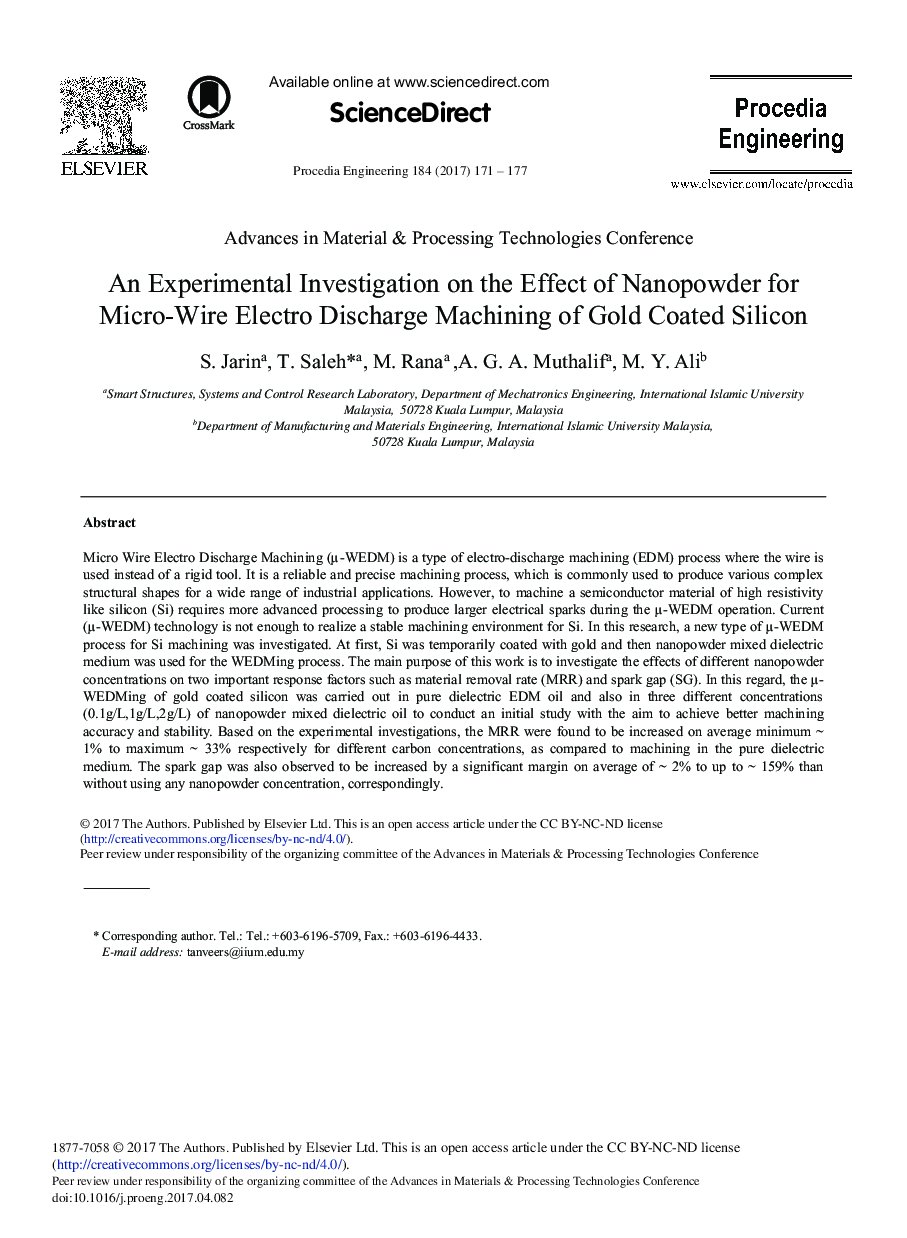| کد مقاله | کد نشریه | سال انتشار | مقاله انگلیسی | نسخه تمام متن |
|---|---|---|---|---|
| 5029119 | 1470642 | 2017 | 7 صفحه PDF | دانلود رایگان |

Micro Wire Electro Discharge Machining (μ-WEDM) is a type of electro-discharge machining (EDM) process where the wire is used instead of a rigid tool. It is a reliable and precise machining process, which is commonly used to produce various complex structural shapes for a wide range of industrial applications. However, to machine a semiconductor material of high resistivity like silicon (Si) requires more advanced processing to produce larger electrical sparks during the μ-WEDM operation. Current (μ-WEDM) technology is not enough to realize a stable machining environment for Si. In this research, a new type of μ-WEDM process for Si machining was investigated. At first, Si was temporarily coated with gold and then nanopowder mixed dielectric medium was used for the WEDMing process. The main purpose of this work is to investigate the effects of different nanopowder concentrations on two important response factors such as material removal rate (MRR) and spark gap (SG). In this regard, the μ-WEDMing of gold coated silicon was carried out in pure dielectric EDM oil and also in three different concentrations (0.1g/L,1g/L,2g/L) of nanopowder mixed dielectric oil to conduct an initial study with the aim to achieve better machining accuracy and stability. Based on the experimental investigations, the MRR were found to be increased on average minimum ⼠1% to maximum ⼠33% respectively for different carbon concentrations, as compared to machining in the pure dielectric medium. The spark gap was also observed to be increased by a significant margin on average of ⼠2% to up to ⼠159% than without using any nanopowder concentration, correspondingly.
Journal: Procedia Engineering - Volume 184, 2017, Pages 171-177